Spring-Loaded Mechanisms
The spring-loaded action is where an object or mechanism is held tightly against a spring, but is initially ‘locked’ into position. Once ‘unlocked’, the object or mechanism is propelled out by the natural action of the spring.
The spring-loaded action was most commonly utilised in box making for the opening of drawers and secret compartments, the releasing of mirror panels, hinged mechanisms (like Betjemann’s Patent mechanisms) and locking mechanisms.
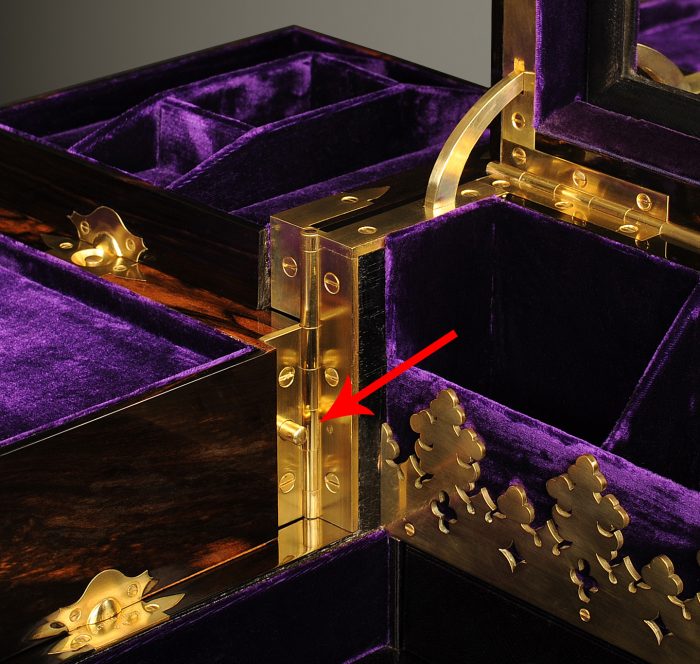
This spring-loaded hinge mechanism propels open the secondary tier. The mechanism is deployed by pushing down on a sliding button at the base of the box.
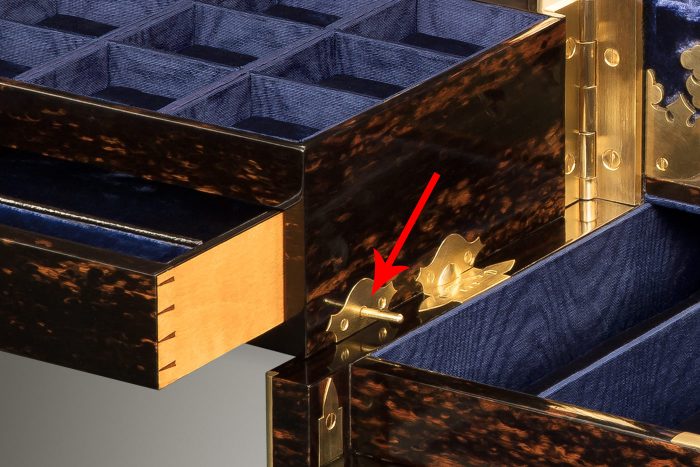
This spring-loaded rod propels open the secondary tier. The mechanism is deployed by pushing down on a sliding button at the base of the box.
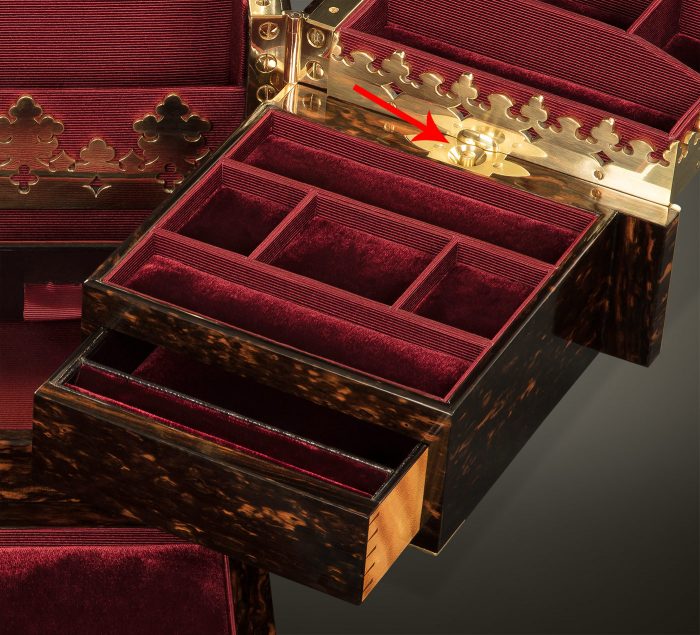
This spring-loaded push-button to the rear of the secondary compartment deploys the concealed, spring-loaded lower drawer.
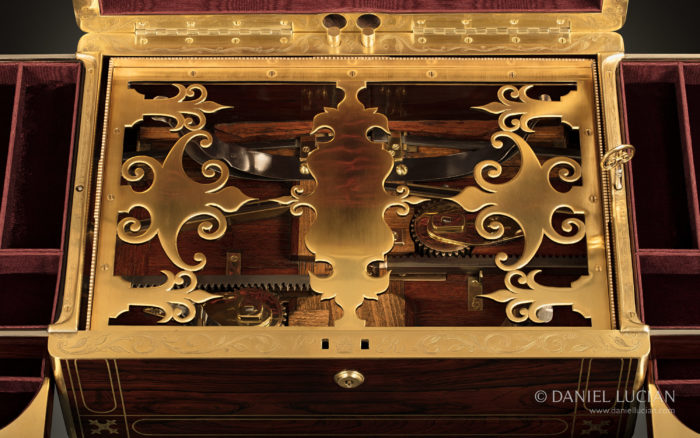
The left push button (top centre) on the rear rim of the box releases two side trays that are propelled outwards on independent spring-loaded rack and pinion mechanisms. Both trays are fitted with their own spring-loaded secret drawers that are deployed by pressing a concealed trigger in the floor above. The right push button (top centre) on the rear rim of the box raises the central brass platform using four pairs of leaf springs.
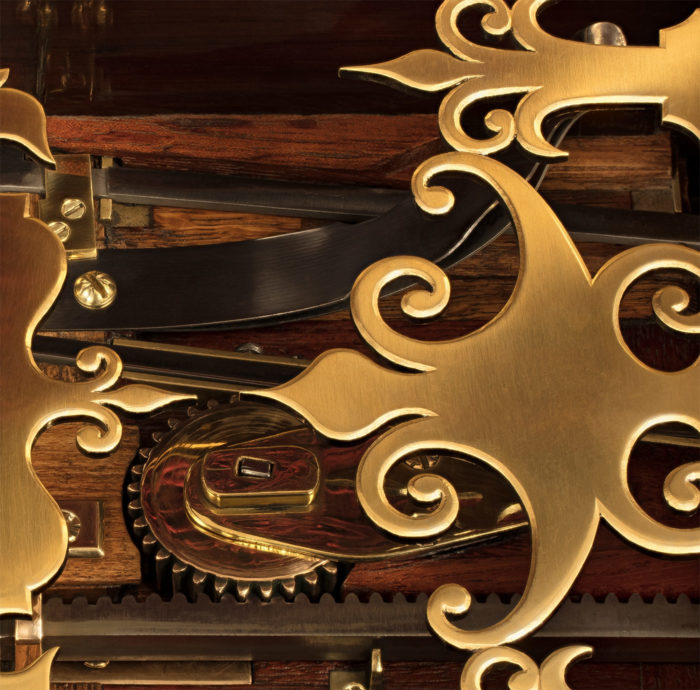
Foreground: View of the rack (steel linear toothed gear) and pinion (brass circular toothed gear) mechanism. The pinion is internally spring-loaded using a spiral torsion spring. Background: View of a pair of steel leaf springs.
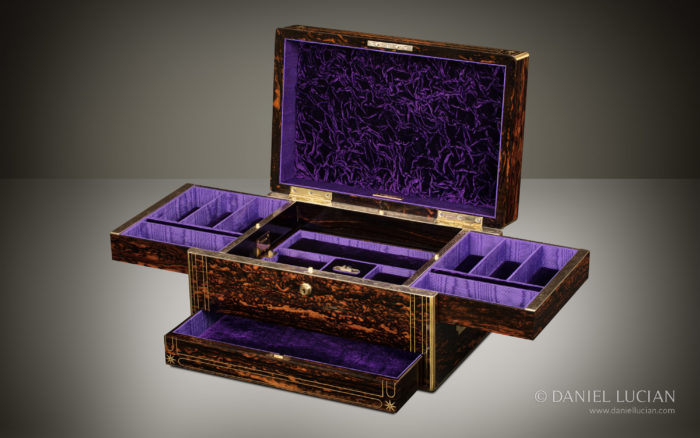
A push button to the rear rim of the box enables the spring-loaded central tray to rise automatically until it rests level with the neighbouring trays.

This spring-loaded rod mechanism is used to pop up the lid and the middle section (both by about 5mm) upon the opening of the twin self-locking Bramah lock.

A concealed brass spring-loaded rod runs down the back of the box and connects with the sprung catch in the floor (middle of photo). When the rod finial is pushed from the main compartment, the action releases the spring-loaded lower drawer.
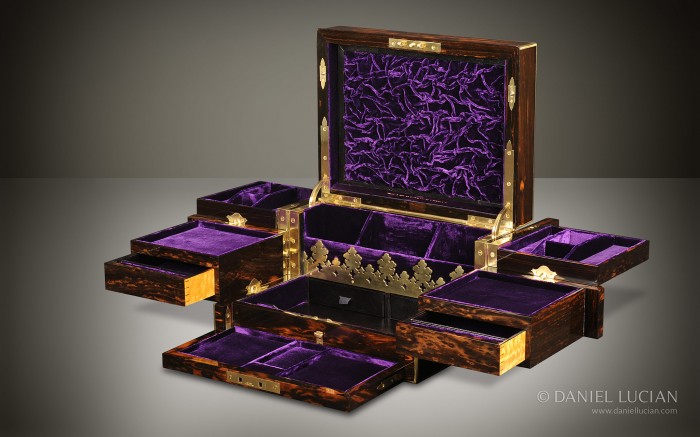
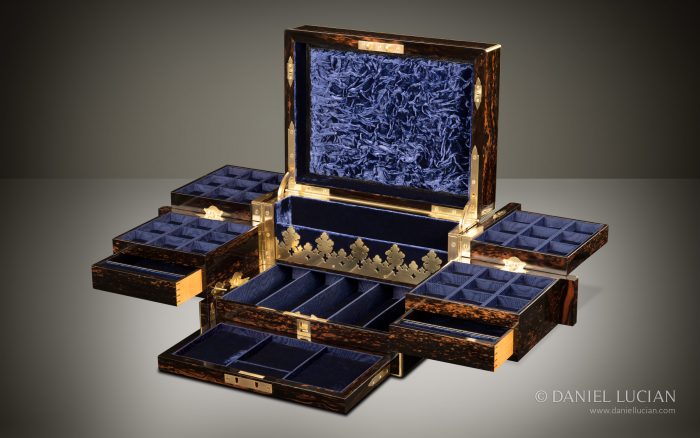

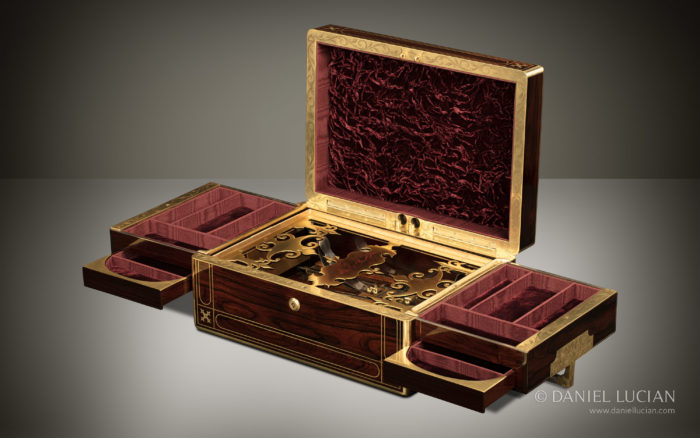
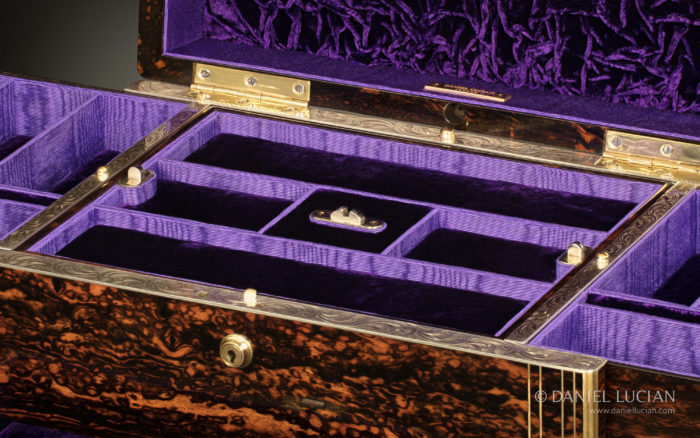
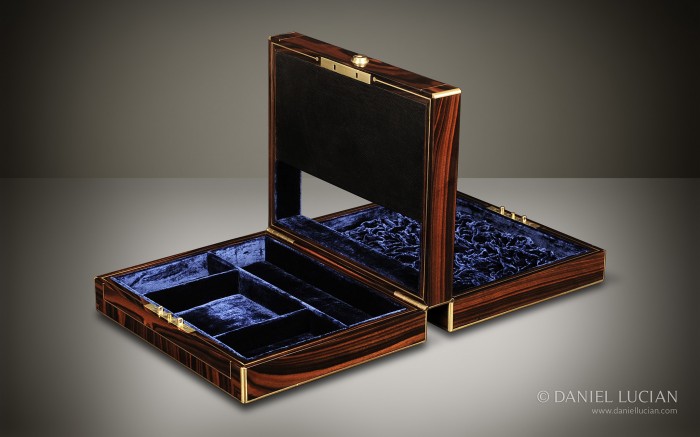
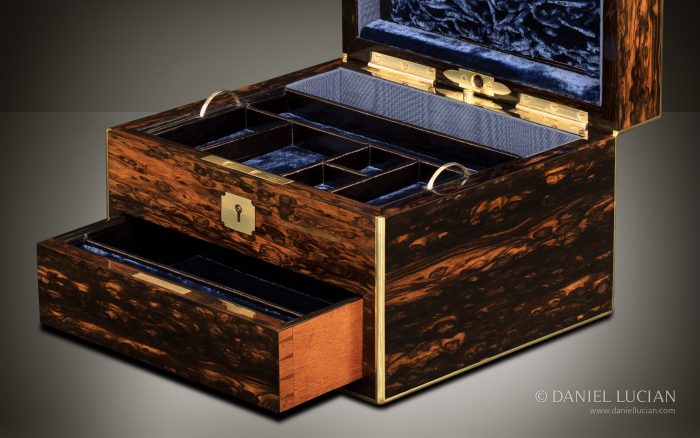
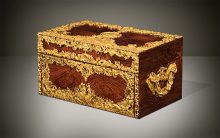 Price On Application
Price On Application